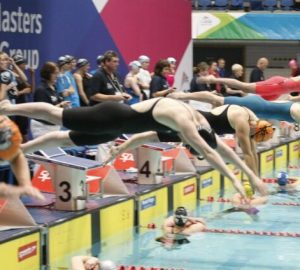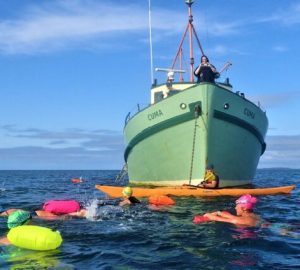Staying on message
On a hot, sunny afternoon earlier this month I went out for a paddle on the Thames and came across a group of teenage boys leaping from a pontoon into the river. It was about a 2m drop into the water, which was more than deep enough, and there was a ladder to climb back out, so they were unlikely to come to any immediate harm. However, I wondered if they realised the tide was going out? With each passing minute, the water was becoming shallower, the drop higher and the risk increasing. Two boys then swam across the river, which was around 30m wide – a little more than the minimum distance asked for to satisfy national curriculum requirements. They weren’t strong swimmers, and wearing baggy shorts can’t have helped, but they made it across despite the current, the passing pleasure boats and fast moving rowers. Then, of course, they starting shouting across for their friends to join them. They were having a good time.
All those boys got home safely that night but there were three drownings around the UK the same day, including a 16-year old boy in a river in Manchester. We don’t know the details but it seems he was having fun in and around the water, just like his peers in London.
The harrowing task of recovering bodies from the water often lands with the police or the fire service. Sometimes finding and retrieving a body can take several days. Meanwhile, they have to deal with distraught relatives and a curious press. Then they have to attend inquests and give evidence to the coroner’s court, sometimes up to a year later. It is therefore perhaps not surprising that their perceptions of risk around open water are a little different to those of swimmers.
While I have enormous respect for the emergency services I have occasionally been critical of their communications around open water. To regular open water swimmers, the messages sometimes look like scaremongering and the risks blown out of proportion. There’s a perception (that was shared by us at H2Open) that the emergency services, with the backing of local authorities, wanted to prevent or discourage swimmers from doing something they love, and which they see as relatively harmless, due to excessive health and safety fears.
Over the past week I’ve been communicating with Dawn Whittaker, Deputy Chief Fire Officer for the East Sussex Fire and Rescue Service and the CFOA (Chief Fire Officers Association) lead for Drowning Prevention and Water Safety. We are planning to publish an interview with Dawn in the next issue of H2Open Magazine.
Without revealing the details of the interview, I can say that my opinions have shifted as a result of our discussions. Firstly, Dawn made it very clear that she doesn’t want to stop people swimming in open water. However, she does want to make them aware of the risks and direct them to places or organisations where or with whom they can swim safely. Secondly, and on a more personal level, Dawn is a keen motorbike rider. She understands that people can have a passion for hobbies that may be seen as risky and that, if you pursue those hobbies, you can take steps to reduce your risks.
The other thing Dawn pointed out was that she and her colleagues speak to thousands of people about open water swimming and many are completely oblivious to the risks and therefore fail to take appropriate precautions. The communications put out by the emergency services are aimed at this audience, not the much smaller number of capable and careful open water swimmers who read H2Open. In the same way, graphic imagery of the impact of road traffic accidents is aimed at reckless young drivers, not careful older ones.
The fact is, the risk of drowning in the UK is roughly twice that of dying in a fire. The fire service has a statutory duty to assess and address all forms of community risk, and that includes water. Given the statistics, it’s logical they should concern themselves with swimming and trying to discourage the unwary from activities that could do them harm. As responsible swimmers, we should be doing what we can to support them. This could include:
- Engaging with and supporting organisations involved in drowning prevention.
- Helping to educate people, particularly the young, about risks in open water and how to stay safe.
- Ensuring that your own swimming is safe and that you make sure you are aware of the risks every time you enter the water.
- Acting responsibly in and around water and not advocating swimming in unsafe locations or conditions.
Finally, if you see communications from the emergency services that you believe are incorrect or unhelpful, respond to them in a positive and constructive way. The fire service has changed its views and messaging over the years in response to feedback. As Dawn says: “Emergency services do listen. However, it makes it easier if the messages back are balanced and proactive rather than irrational and defensive.”








